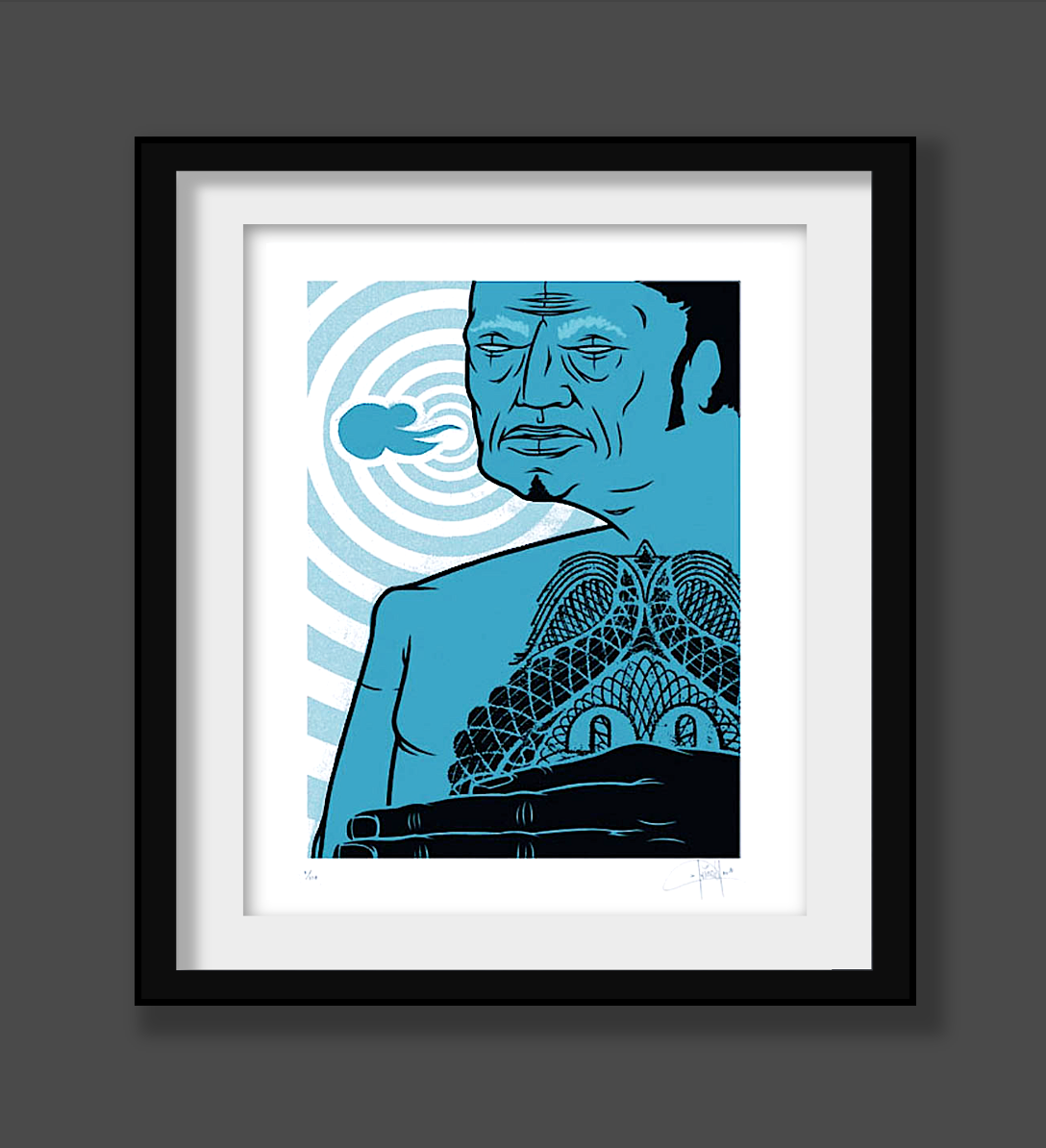

Title: Spoken Word 2 Color Screenprint Signed By Artist Dave Kinsey
Shipping: $45.00
Artist: N/A
Period: Contemporary
History: N/A
Origin: North America > United States
Condition: Museum Quality
Item Date: 2010
Item ID: 4327
Artist Dave Kinsey, Spoken Word (set) BLK/MRKT Editions 2-color screenprint on 100% cotton rag. Edition: 150/ea Size: 11 x 14 inches/ea signed/numbered/stamped. Spoken Word is a 2 print set available. These prints have been sold out for some time! Dave Kinsey was born in Pittsburgh in 1971 and attended the Art Institute of Pittsburgh and the Art Institute of Atlanta before moving to California in 1994 to pursue a career as a designer and fine artist. Artist Dave Kinsey: His early guerilla art reflected the graffiti swagger of the streets, but had the heart of the thousands of faceless urban workers. His characters splashed across the walls of metropolis spoke out to the commuting drones to “rethink and unlearn”. His Gallery in Culver City has showcased not only his rebellious works but fostered a crop of brilliant emerging and travelled artists alike. He’s always known where to find the fight and hit with a strong light. His work captures the universal essence of the human condition mainly through an energetic portrayal of urban figures. Working spontaneously, and utilizing a range of mediums, he constructs multi-layered, textured environments easily likened to the complexities of contemporary life. His portraits depict beings who are both triumphant in their defiant stance to their surroundings, and tragic, as they transmit a visual display of raw emotion and jangled nerves. The style and substance of his body of work originates in street art, and in keeping with his goal “to expose as many people to art as possible and to honor the power art has when it’s created and accepted”, Kinsey founded BLK/MRKT Gallery (now Kinsey/DesForges) in 2001, allowing him to provide a crossroads for a new movement of young and electrifying iconoclasts. In addition to these pursuits his fine art has been shown in galleries and museums worldwide, among these a recent exhibition at the URBIS Museum in Manchester and Art Brussels in Belgium. He has also been featured in such publications as The New York Times, Black Book, The Washington Post and BLK/MRKT One and Two, and invited to speak at numerous institutions such as The Art Center College of Design, UCLA, Montserrat College of Art and most recently, the Semi-Permanent conference in Sydney, Australia.
Dave Kinsey, is a talented artist with a story that's as vibrant as his work. Born in Pittsburgh, he's a self-taught artist who found his passion for creativity at a young age. In the '90s, he emerged as a prominent figure in the street art scene, leaving his mark on the walls of urban landscapes. Kinsey's style is a fusion of street art, graphic design, and fine art. His work often features dynamic compositions, bold colors, and a sense of movement. It's like he's capturing the energy of the city and translating it onto canvas. As he gained recognition, Kinsey's art transcended the streets and made its way into galleries around the world. His pieces explore themes of social and environmental issues, adding depth and meaning to his visually striking creations. What's remarkable about Kinsey is his ability to evolve. He's not one to be confined by a particular style or medium. Over the years, he's experimented with different techniques and materials, constantly pushing the boundaries of his own creativity. In addition to his solo career, Kinsey has collaborated with other artists and brands, leaving his imprint on various projects. His art isn't just confined to canvas; you can find it on album covers, clothing, and even public installations. Beyond the art scene, Kinsey's impact extends into the realm of activism. He's used his platform to raise awareness about social and environmental issues, proving that art can be a powerful tool for change. So, Dave Kinsey isn't just an artist; he's a storyteller, a visual poet capturing the spirit of the streets and the essence of our times.
Link: http://en.wikipedia.org/wiki/Printmaking
Printmaking is the process of making artworks by printing, normally on paper. Printmaking normally covers only the process of creating prints with an element of originality, rather than just being a photographic reproduction of a painting. Except in the case of monotyping, the process is capable of producing multiples of the same piece, which is called a 'print'. Each piece produced is not a copy but considered 'an original' since it is not a reproduction of another work of art and is technically (more correctly) known as an 'impression'. Printmaking (other than monotyping) is not chosen only for its ability to produce multiple copies, but rather for the unique qualities that each of the printmaking processes lends itself to. Prints are created from a single original surface, known technically as a matrix. Common types of matrices include: plates of metal, usually copper or zinc for engraving or etching; stone, used for lithography; blocks of wood for woodcuts, linoleum for linocuts and fabric plates for screen-printing. But there are many other kinds of matrix substrates and related processes discussed below. Works printed from a single plate create an edition, in modern times usually each signed and numbered to form a limited edition. Prints may also be published in book form, as artist's books. A single print could be the product of one or multiple techniques.
In printmaking processes requiring more than one application of ink or other medium, the problem exists as to how to line up properly areas of an image to receive ink in each application. The most obvious example of this would be a multi-color image in which each color is applied in a separate step. The lining up of the results of each step in a multistep printmaking process is called "registration." Proper registration results in the various components of an image being in their proper place. But, for artistic reasons, improper registration is not necessarily the ruination of an image.